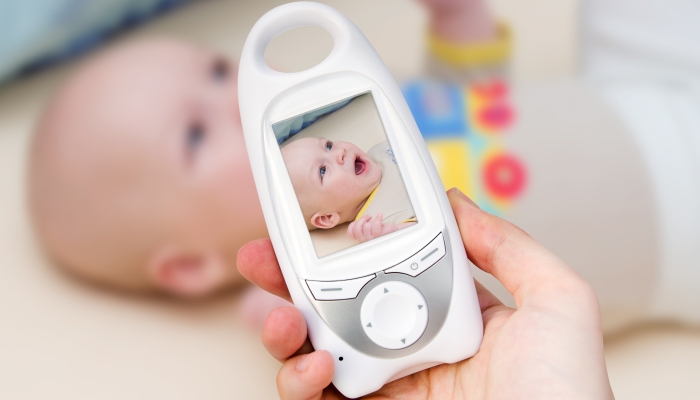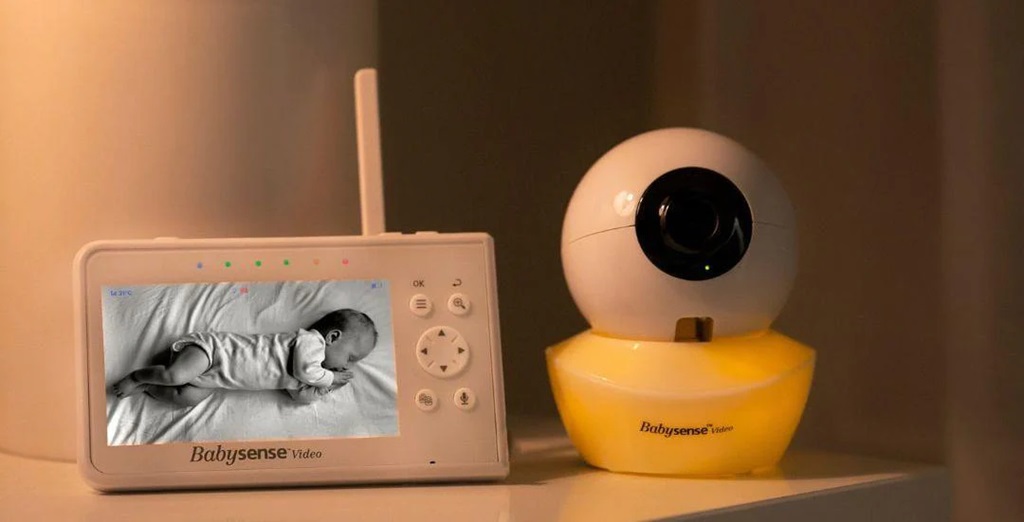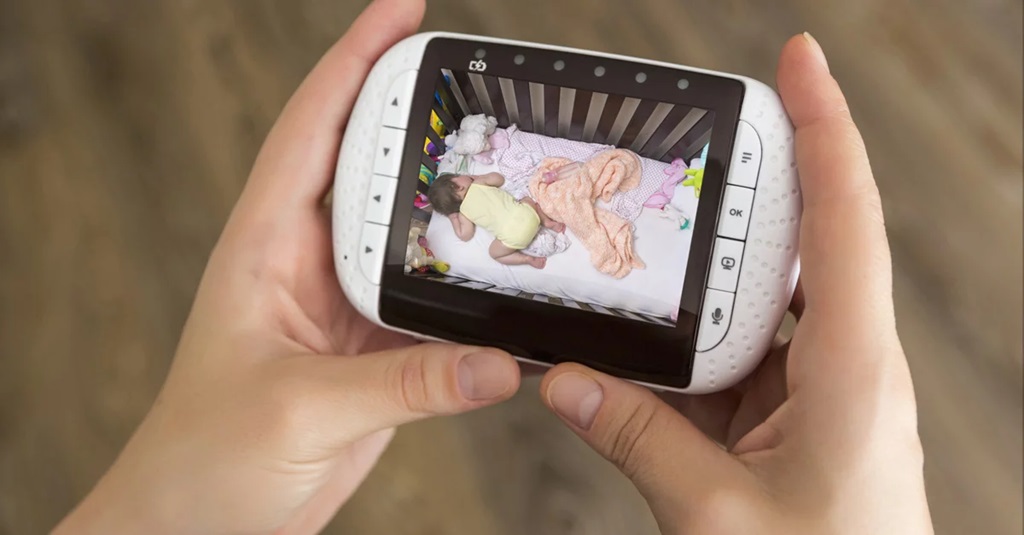
21 Feb When to Stop Using Baby Monitor?
As a loving and caring parent, one of your top priorities is ensuring your little one is always safe and secure. A baby monitor can be a handy tool that provides much-needed peace of mind by allowing you to listen to your baby’s sounds and movements even when you are not in the same room. However, as your child grows and becomes more independent, you may wonder when it is the right time to stop using the baby monitor and let your child have more freedom. Here is a comprehensive guide on determining when to stop using baby monitor.
The Benefits of Baby Monitors

Baby monitors became widely popular in the 1990s and have been a staple baby product ever since. Here are some of their key benefits:
Hearing Your Baby
The primary function of a baby monitor is to let you hear your baby from another room. You can respond promptly if your baby cries or makes noises. This prevents your little one from becoming distressed.
Peace of Mind
Knowing you can always hear your baby provides significant peace of mind. You can confidently do chores, take a shower, or relax without constantly worrying about your baby’s well-being.
Mobility
Unlike just listening at the door, a baby monitor lets you hear your baby anywhere in your home and yard. Newer options even offer an unlimited range via Wi-Fi and apps.
Extra Eyes
Video baby monitors let you see your baby in addition to hearing them. You can check in and assess the situation before going to tend to them.
When Can You Stop Using a Baby Monitor?
Determining the right time to stop using a monitor depends primarily on your baby’s age and stage of development. Here are some general guidelines:
Stop Hearing-Only Monitor Around 6 Months
Most experts recommend stopping using an audio-only baby monitor around six months. By this age, serious risks like SIDS have declined dramatically. Babies are also less likely to experience apnea episodes or “breath holding.”
Your six month old will likely sleep through the night and no longer need night feeds. You will hear any loud cries from your room without the monitor.
Stop Video Monitor Around 1 Year
A video monitor can be used for a long time until your baby is around one year old. At this point, they are mobile and more aware of their surroundings. The video capabilities let you see if your active baby has gotten tangled in the crib or needs assistance.
However, around the one-year mark, separation anxiety decreases. Your child likely sleeps through the night and can self-soothe if they stir. The video monitor becomes unnecessary surveillance.
Earlier If Not Providing Useful Information
Some parents can stop using the monitor even earlier than these benchmarks. If your monitor seems to provide “nice to have” information rather than “need to have,” go ahead and ditch it.
Maybe you sleep with the door open and can hear any concerning noises. Or your baby has been sleeping soundly without any incidents for weeks. Don’t prolong monitor use out of mere habit.
Signs Your Baby Is Ready
To decide if your baby is truly ready to go monitor-free, watch for these key signs:
Sleeping Through the Night
If your baby regularly sleeps 8 to 12 hours without waking, they likely don’t need overnight monitoring. You’ll hear any crying from your bedroom.
Waking Less Frequently
If your baby still wakes occasionally but progressively wakes less often, they demonstrate growing independence. Discontinue the monitor if wakings are infrequent.
Self-Soothing Skills
Look for signs your baby can self-soothe and put themselves back to sleep after stirring. Things like finding a pacifier, thumb sucking, or clutching a security blanket are good skills.
No More Night Feeds
By six months, breastfed babies can sleep all night without needing milk. Formula-fed babies may continue occasional night feeds but reduce requiring them by one year old.
Increased Mobility
If your baby can sit up, pull to stand, scoot, or crawl, they have more capability to engage with their environment. They likely don’t need constant remote supervision.
Decreased Separation Anxiety
Babies grow more comfortable being away from their parents around 6 to 9 months old. If your baby happily plays independently in their crib without crying, they may not need monitoring.
Settling with a Routine
Babies who connect sleep cues like a sound machine or lovey with going to sleep quickly settle themselves without needing parental intervention.
Gradual Weaning
Don’t go cold turkey – take a gradual approach to weaning off the monitor:
Use It Less Frequently
Start by only using the monitor for daytime naps or at night, not both. Then, use it only 2-3 times per week.
Turn Down the Volume
Reduce your baby’s dependence on being soothed by your voice by lowering the monitor volume over time.
Increased Check-Ins
With the monitor off, periodically check on your baby in longer intervals. Go from every 10 minutes, to every 20, to every 30.
Move Monitor Away
Place the monitor across the room, outside the door, then eventually in another room entirely. Your baby will learn to self-settle.
Go Monitor-Free Naps/Nights
Build up from monitor-free nap times to monitor-free evenings to entire monitor-free nights. Watch for any issues.
Transition Tips and Tricks
Here are some helpful tips to ease the transition away from the baby monitor:
Maintain Bedtime Routine
A consistent, predictable bedtime routine makes your baby feel secure at night without the monitor. Follow the same sequence of baths, pajamas, stories, etc.
White Noise Machine
The continuous soothing sound from a white noise or sound machine replaces the background noise from the monitor.
Comfort Item
Give your baby a unique plush or blanket to provide comfort. This “lovey” can substitute for your presence.
Checks Before Bed
Do an in-person check just before your average monitor use time. Peek in and ensure your baby is sleeping soundly.
Keep Monitor Close By
Once you’ve removed the monitor, keep it handy, just in case. Having it immediately accessible reduces separation anxiety.
Baby Proof the Room
Ensuring your baby’s room is 100% baby-proofed gives peace of mind that it’s a safe space without constant supervision.
Leave Door Open
Leaving your baby’s door open allows you to hear any cries better. You can also peek in to check on them periodically.
What If Your Baby Still Needs Monitoring?

While most babies are ready to ditch the monitor between 6 months and a year, some exceptions exist:
Premature Babies
Babies born prematurely often reach milestones later. Speak to your pediatrician about ideal monitor use for your preemie.
Sleep Issues
If your baby has sleep issues like frequent night wakings, continue using the monitor until their sleep consolidates.
Illnesses
Sick babies or those prone to respiratory issues may warrant extended monitoring to detect distress.
Anxiety Parents
Some parents find it very difficult to give up their peace of mind. Maintaining monitor use may be better than highly anxious, sleepless nights.
Only Child
The monitor provides noise and stimulation for only children. They may rely on its presence more than children with older siblings around.
If your child falls into these categories, keep the monitor going as needed. Reassess their readiness monthly as they develop.
Alternatives to Try
If you and your baby are finding it difficult to cease monitor use completely, there are some middle-ground options:
Audio or Video Monitor Alternate Nights
Use the full monitor only on alternating nights. On the in-between nights, utilize an alternative option.
Movement-Sensing Monitor
A sensor under the crib mattress detects movement if your baby stirs or cries. This is less intrusive than a camera.
Smart Baby Monitor
New wifi camera systems let you check in on your phone. Viewings are less constant but available if desired.
Night Vision Camera
An essential night vision camera without sound capabilities allows you to check in without constant surveillance.
Baby Clocks
Some digital clocks project light and change color if noise is detected in your baby’s room. This provides visual reassurance.
Making the Switch
While giving up the monitor can be difficult for anxious parents, remember that this transition reflects positive growth for your baby. Here are signs it’s the right time:
- Child meets key milestones like self-soothing, mobility, and sleeping through the night
- You haven’t found the monitor necessary or valuable for a while
- Baby seems happy, settled, and independent in the crib
While considering if kids’ travel pillows are safe for toddlers, lean on these other methods like sound machines, open doors, and periodic check-ins. Avoid prolonged or unnecessary monitoring, trusting in your baby’s development instead.
Frequently Asked Questions
Is it possible to become too reliant on a baby monitor?
Yes, parents can become overly reliant on baby monitors. The constant surveillance can lead to hypervigilance and anxiety when any slight sound is heard. Try to use the monitor only when necessary for safety, not for constant reassurance.
What are some signs it may be time to stop using a video monitor?
Some signs it may be time to ditch the video monitor include your baby sleeping through the night consistently, self-soothing when waking, decreased separation anxiety, increased play skills and mobility, and no longer needing night feeds. The video is likely unnecessary surveillance if your baby is developmentally on track.
Should you stop using a baby monitor for naps at the same time as overnight?
It’s OK to stop using the baby monitor for naps overnight to wean your child gradually. Since naps have fewer risks than overnight sleep, it makes sense to start phasing it out during daytime sleep first. Ensure your baby settles well without the monitor during naps before ditching overnight.
Is it possible to become dependent on a baby monitor as a parent?
Yes, parents can sometimes become dependent on baby monitors, finding it hard to sleep without the constant reassurance. This dependency can be psychological. Try gradually moving the monitor away or using other transitional objects to help break the habit.
What are some alternatives to help reduce baby monitor use?
Some alternatives that can minimize monitor use include using an audio-only or movement monitoring option, keeping the door open with a baby gate, hanging a mirror to see the baby’s reflection, using a night light or baby clock, and doing periodic in-person checks.
What if your baby is over one but is still having sleep issues?
If your baby is over the usual age of stopping the monitor but still having disrupted sleep or night wakings, it’s OK to continue use as needed. Every baby is different. Talk to your pediatrician if sleep issues persist beyond the first year, even with the monitor.



Sorry, the comment form is closed at this time.